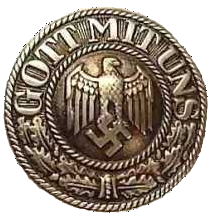MEMORANDUM
on
Certain Aspects of the Bolshevist Movement in Russia
Character of Bolshevist Rule
Economic Results of Bolshevist Control
Bolshevist Program of World Revolution
WASHINGTON
GOVERNMENT PRINTING OFFICE
1919
OCTOBER 27, 1919.
Hon. HENRY CABOT LODGE,
Chairman, Committee on Foreign Relations, United States Senate.
Sir: I have the honor to send you herewith, for the information of the Committee on Foreign Relations of the Senate, a memorandum on certain aspects of the Bolshevist movement in Russia.
The memorandum has been prepared from original sources by the Division of Russian Affairs of the Department of State. As you will see, the statements are based almost entirely on translations from Bolshevist newspapers. These include the official organs of the All-Russian Central Executive Committee of Soviets, of local Soviet committees, and of the Russian Communist Party (Bolsheviks). The Bolsheviks' own statements are supplemented by the reports of American representatives.
The appendix contains the full text of representative Bolshevist documents. The text of other documents, such as the constitution of the so-called Soviet Republic, will be found in the published hearings on Bolshevist propaganda before the Committee on the Judiciary of the Senate, and for that reason are not reproduced here.
Since the overthrow of the autocracy in March, 1917, the Department of State has studied developments in Russia with the sympathy which America has traditionally shown toward all movements for political and social betterment. The study which has been made of the Bolshevist movement, some of the results of which are furnished herewith, show conclusively that the purpose of the Bolsheviks is to subvert the existing principles of government and society the world over, including those countries in which democratic institutions are already established. They have built up a political machine which, by the concentration of power in the hands of a few and the ruthlessness of its methods, suggests the Asiatic despotism of the early Tsars. The results of their exercise of power, as shown by the documents presented in the accompanying memorandum, have been demoralization, civil war, and economic collapse. I commend to your careful consideration the detailed information which the memorandum contains.
I am addressing a similar letter to the chairman of the Committee on Foreign Affairs of the House of Representatives.
I have the honor to be, sir, your obedient servant,
ROBERT LANSING.
(3)
| CONTENTS. | Page. |
|
INTRODUCTION.......................................................... |
7 |
|
|
|
|
1. "Dictatorship of Proletariat"................................................. |
7 |
|
2. Elections to Soviets.............................................................. |
9 |
|
3. Extraordinary commissions.................................................. |
9 |
|
4. Terror.................................................................................... |
11 |
|
5. Class discrimination in food rations.................................... |
12 |
|
6. Red Army............................................................................. |
13 |
|
7. Social reconstruction and education.................................... |
13 |
|
8. Peasant protests.................................................................... |
13 |
|
9. Summary.............................................................................. |
14 |
|
|
|
|
1. Blame on others................................................................... |
15 |
|
2. Abandonment of principles.................................................. |
15 |
|
3. Policy of destruction............................................................ |
15 |
|
4. The budget........................................................................... |
15 |
|
5. Issue of paper money........................................................... |
16 |
|
6. Disorganization of administrative machinery...................... |
17 |
|
7. Productivity of labor............................................................ |
17 |
|
8. Industrial collapse................................................................ |
17 |
|
9. Breakdown of transportation............................................... |
18 |
|
10. Food supply....................................................................... |
19 |
|
11. Distress in agricultural districts......................................... |
19 |
|
12. Summary............................................................................ |
19 |
|
|
|
|
1. Bolshevism international, not national................................ |
20 |
|
2. Typical proclamations.......................................................... |
21 |
|
3. Communist international...................................................... |
21 |
|
4. Compromises tactical........................................................... |
22 |
|
|
|
|
I. Proclamation calling Communist (Third) International........ |
23 |
|
II. Lenin's theses, March, 1919........................................... |
25 |
|
III. Lenin's report to party congress, March, 1919.......... |
28 |
|
31 |
|
|
32 |
|
|
VI. Extraordinary Commissions, news items on............... |
32 |
|
VII. Extraordinary Commissions, article on....................... |
32 |
|
VIII. Peters' proclamation on mass searches.................... |
33 |
|
IX. Class food-cards............................................................ |
34 |
|
X. Food supply, class discriminations................................. |
34 |
|
XI. Food supply, official announcement............................. |
34 |
|
35 |
|
|
35 |
|
|
XIV. Budget of 1919............................................................ |
39 |
|
XV. Copenhagen "Socialdemokraten," Interview with Gregory Alexinsky, a well-known Russian Menshevik (June, 1919)........................................ |
41 |
|
XVI. Lenin's theses, March, 1918..................................... |
42 |
|
XVII. Bolshevist program for world revolution, July, 1918.......... |
45 |
|
XVIII. Article by Trotsky, April, 1919............................. |
46 |
|
XIX. Communist International proclamation for May 1 (1919)...... |
47 |
|
XX. Supplementary Russian-German treaty, August 27,1918......... |
49 |
|
XXI. Russian-German financial agreement, August 27, 1918......... |
52 |
(5)
146315-19-2














